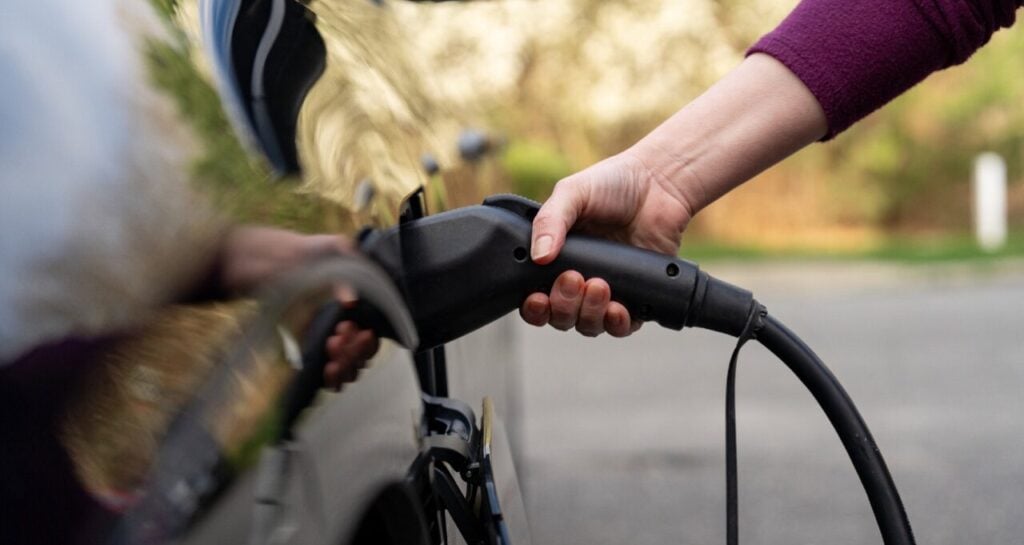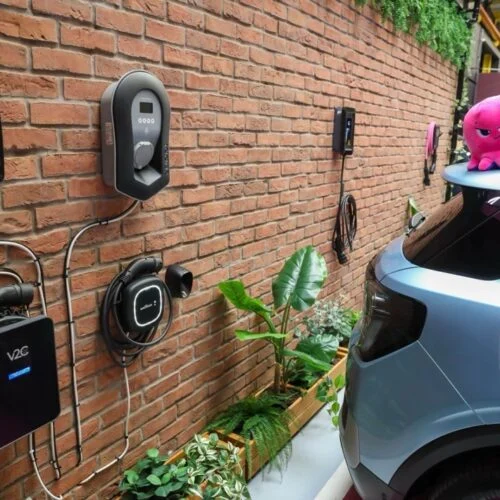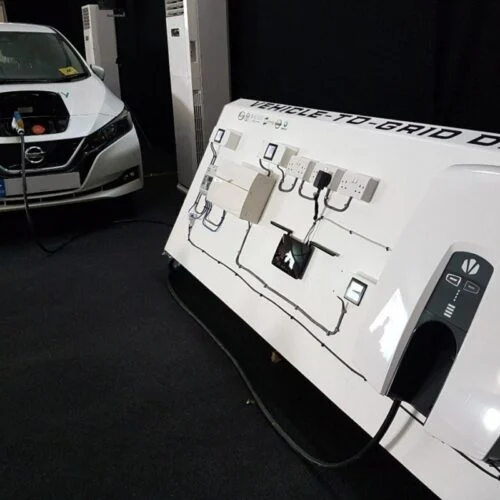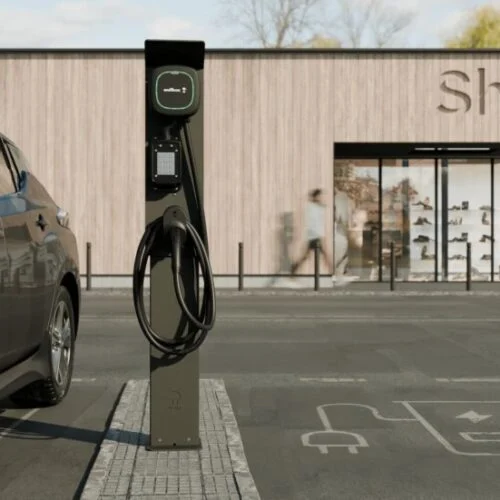New charging points installed in April 2025 across the UK, EU and European Free Trade Association (EFTA) countries totalled 32,176.
As shown in Rho Motion’s EV Charging Database, of the new chargepoints installed in those nations, 24,994 use an alternating current (AC), with capacity of 22kW or below. The remaining 7,182 were direct current (DC) chargers, with the higher capacities necessary for rapid and ultra-rapid charging.
The total number of chargepoints installed across the UK, EU and EFTA this year (up to end of April 2025) reached over 1 million (1,046,469), following the addition of 93,933 charging points since January.
In the US and Canada, Rho Motion has recorded the addition of 15,148 chargepoints year-to-date (up to April 2025), bringing the total installed figure to 243,386. Additions in April were split almost equally between AC and DC chargers (2,215 AC / 2,209 DC). This marks an increase in AC installations and decrease in DC compared with March 2025, when the split was 4,279 AC / 1,068 DC.
Chinese deployment of EV chargepoints, as deployment of the vehicles themselves, leads globally, with accumulated chargepoints in the country nearing the 4 million mark (3,775,300). Between January and April this year, 389,900 new chargepoints have been added.
April 2025 saw 38,700 new AC chargers deployed in China, and 49,000 new DC, marking an increase in higher capacity deployments compared with March, which saw 36,000 AC / 27,000 DC chargers added.
Netherlands EV charging deployment focused on AC chargers
Of particular note were figures from the Netherlands, where this year the number of monthly DC charger installations has not exceeded three, and, up to April, 2025 saw just 10 new DC chargepoints, as shown in the chart below.
Rho Motion said that this is a trend that has been seen in the country over the years. Although the Netherlands have the highest number of chargepoints in Europe, only a small share is fast charging.
Being able to charge an EV to a high level in a short amount of time is often seen as the premium for a chargepoint, however a higher density of available chargers, and strategically located chargepoints, can mean that AC charging is just as workable.
The demographics, needs, and infrastructure deployment strategy in the Netherlands have informed the rollout of more AC chargers. However, this year has been marked with historically low numbers of DC chargepoints being installed, mainly due to grid constraint issues, said Rho Motion.
Global charging market highlights April 2025
In the US and Canada, stable growth in the fast-charging segment was maintained with funding from the US Department of Transportation’s National Electric Vehicle Infrastructure (NEVI) funding, and the Charging and Fuelling Infrastructure (CFI) discretionary grant programme.
However, Rho Motion suggested that uncertainty surrounding tariffs implemented by US president Donald Trump will likely impact future deployment for networks with lower margins and difficulties accessing capital for smaller chargepoint operators (CPOs).
In Europe, the UK government’s removal of planning restrictions for workplace chargers will drive the deployment of workplace chargers when the change comes into force in May. The change also applies to private or at-home chargers, which the database does not track. In Germany, new incentives for businesses to install chargers (beginning in July) will have a similarly positive effect.
China is seeing a shift toward a higher share of ultra-fast charging in its deployments (which has been seen already between March and April) following announcements from BYD and CATL, with the former targeting to install MW-capacity chargers by the end of summer.
Global market deployment data courtesy of Rho Motion.






